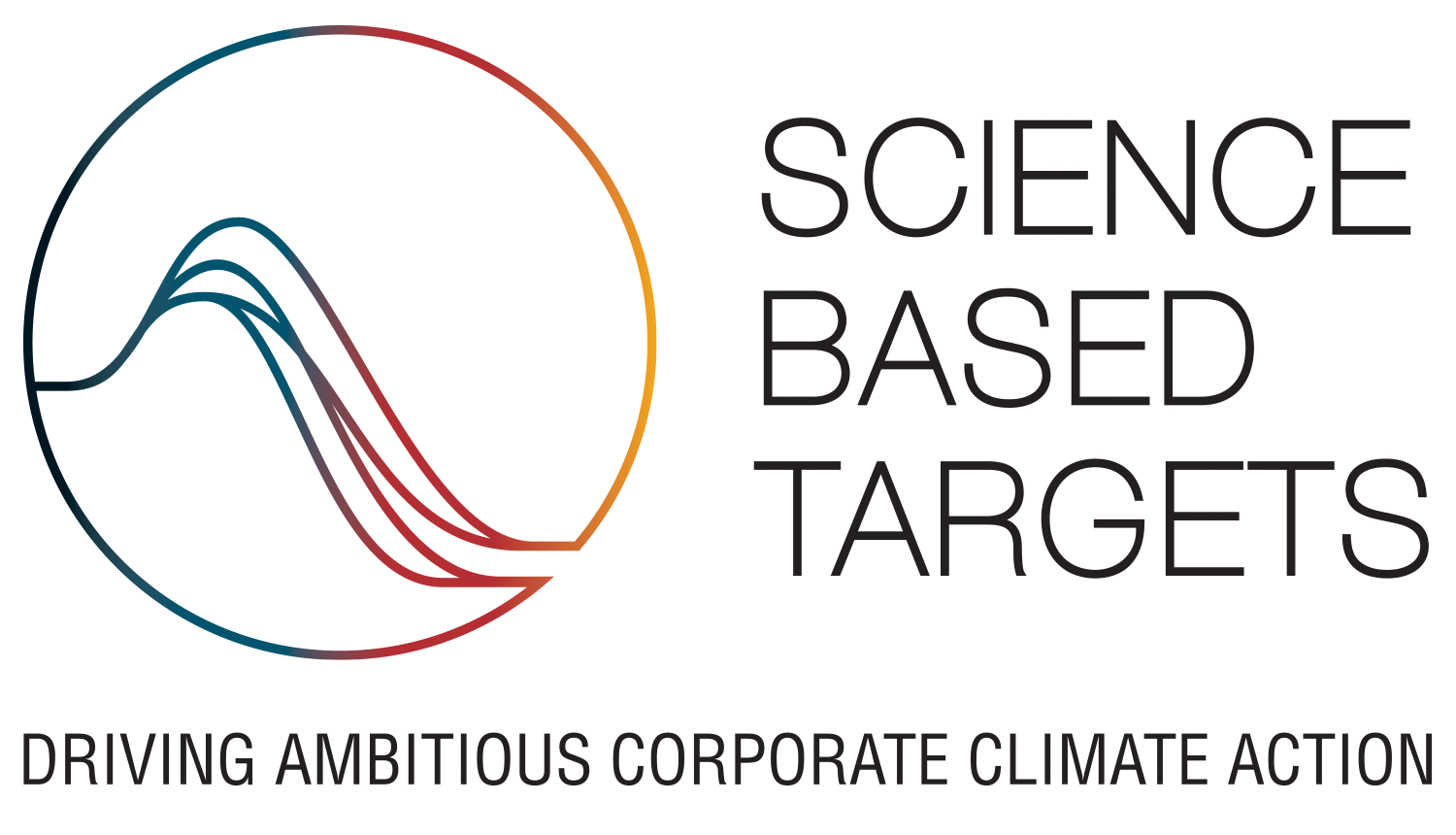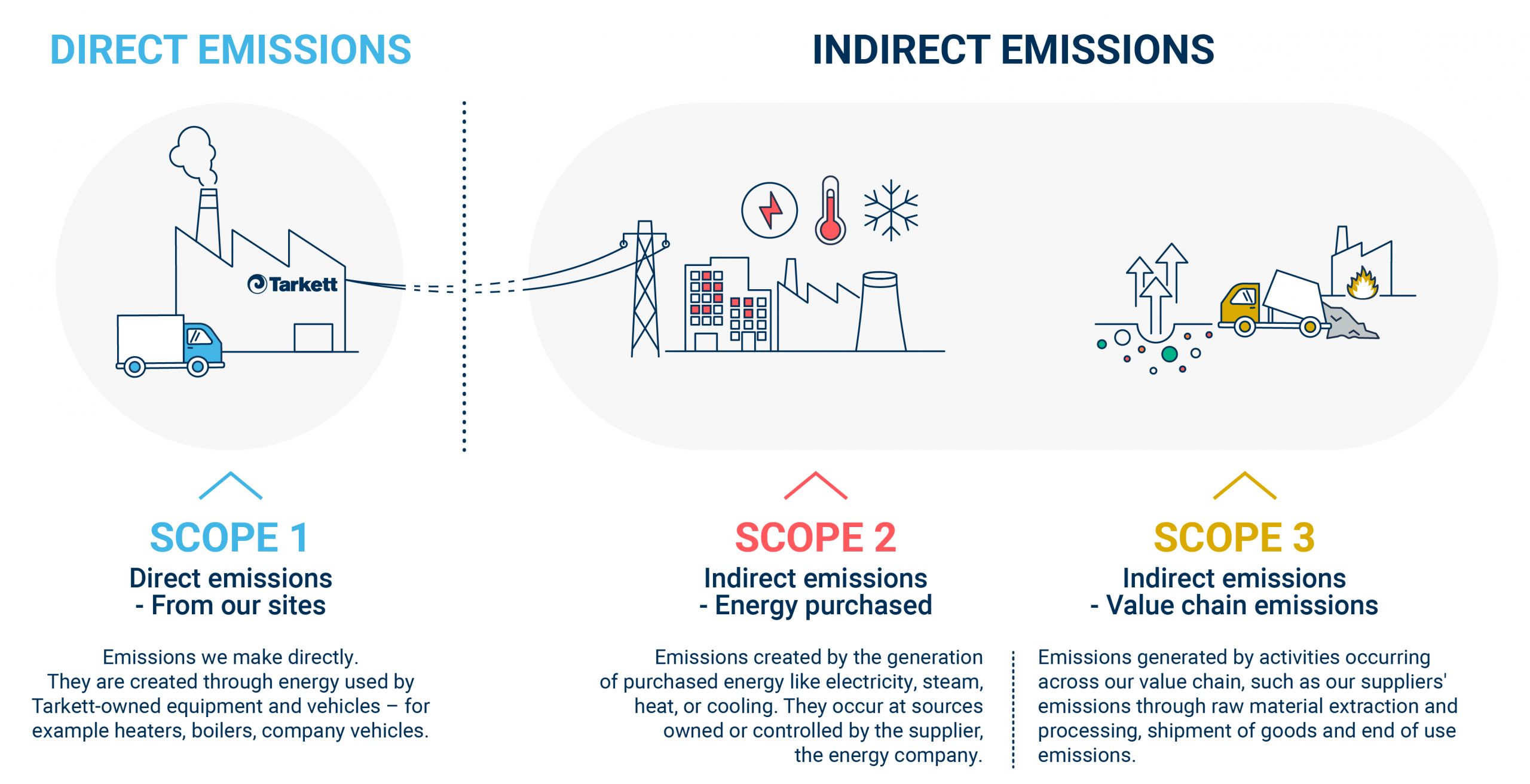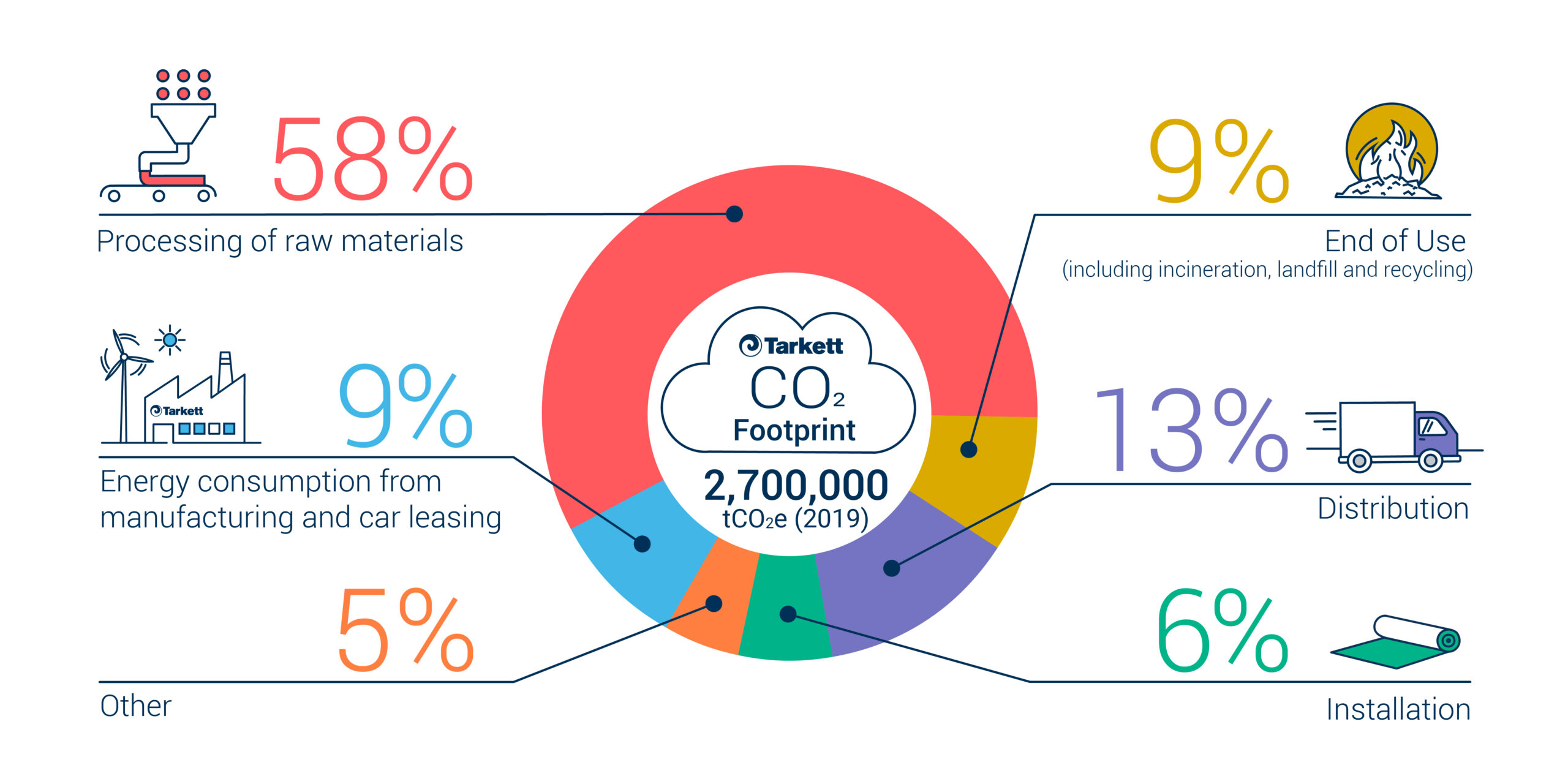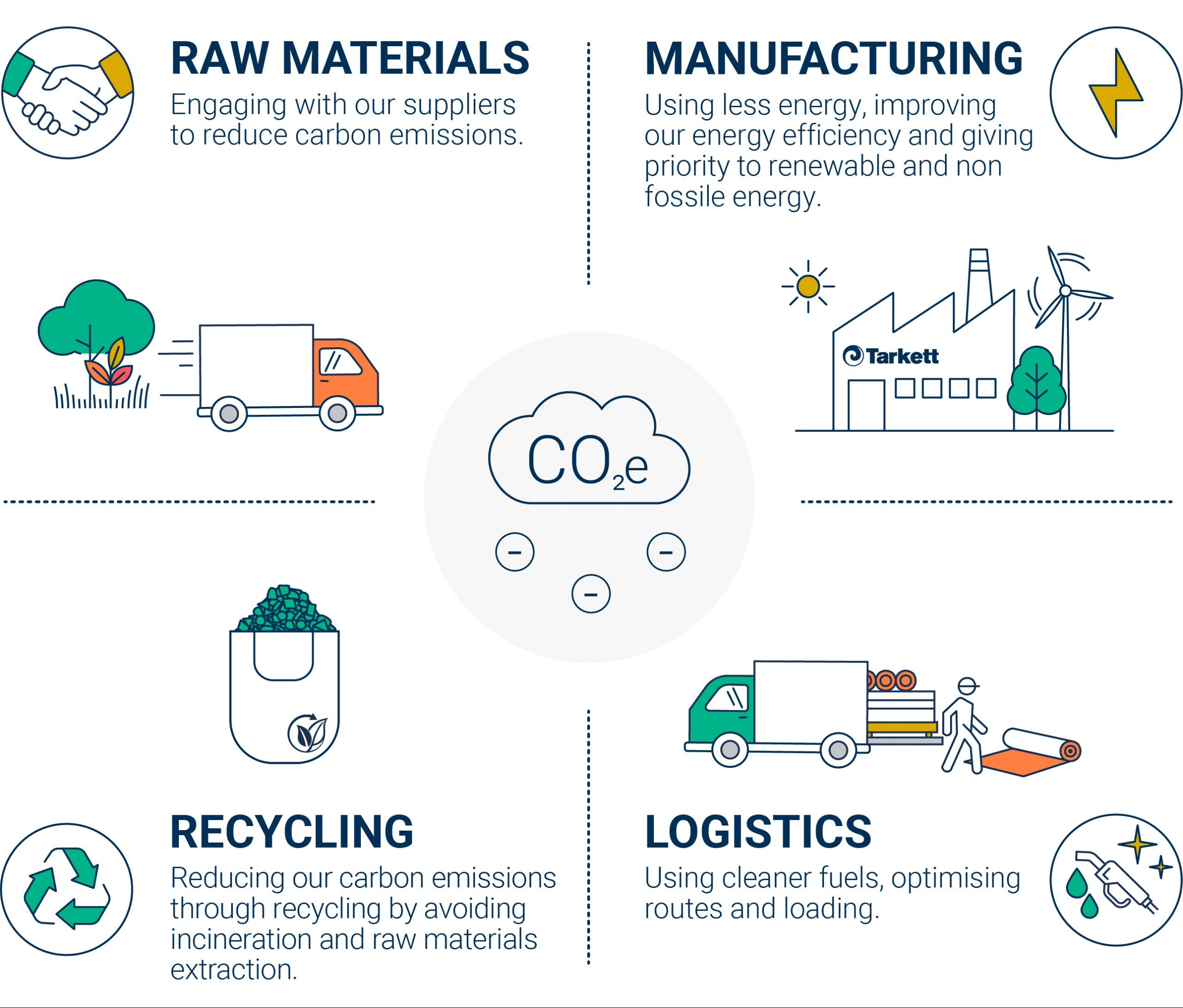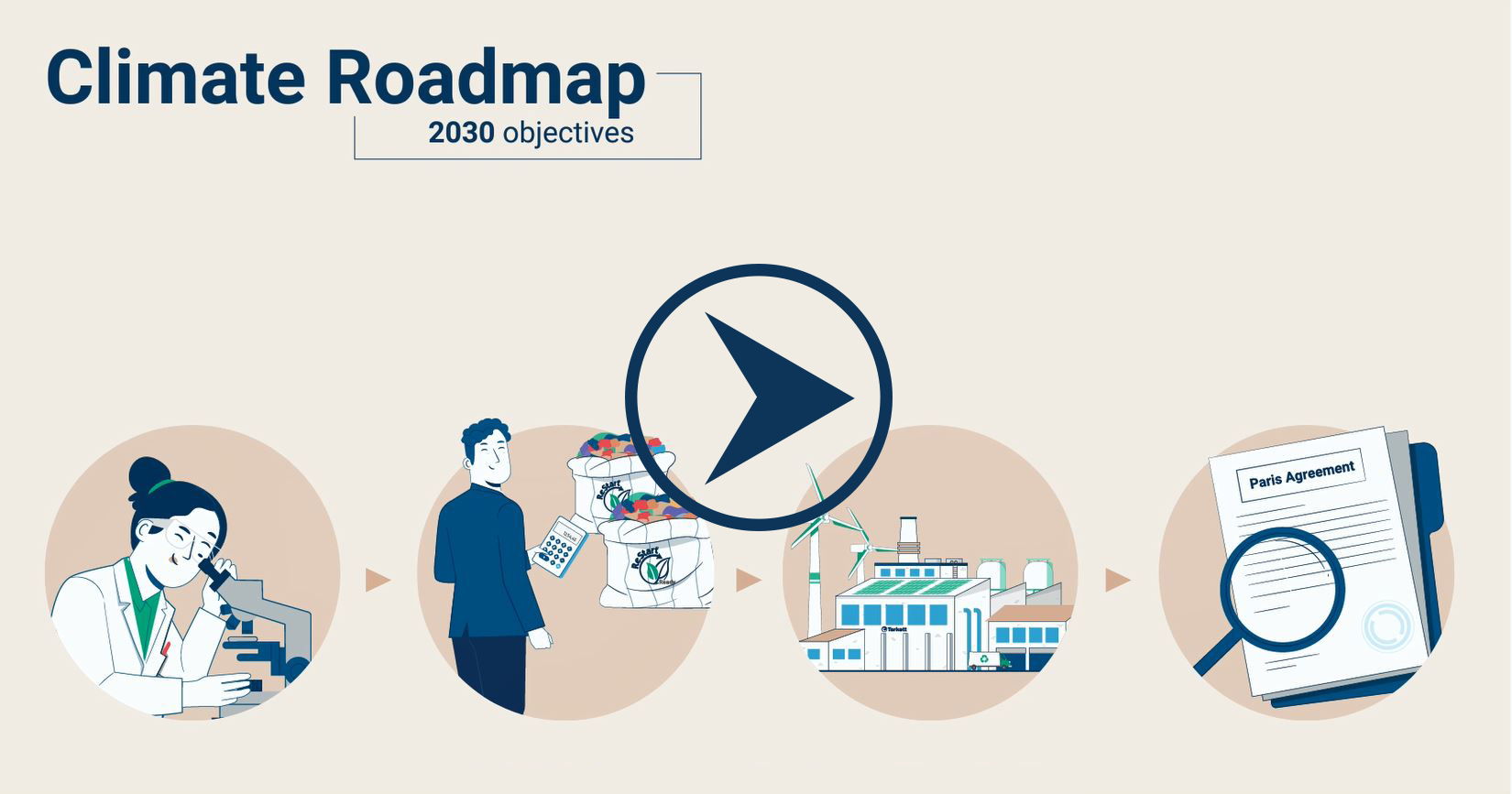
Low Carbon Solutions
Tarkett is committed to reducing its carbon footprint throughout its value chain. Only 9% of our carbon footprint comes from our own operations: the other 91% comes from raw materials, transportation, installation and incineration of our products at the end of their life. We are improving the energy efficiency of our factories and are increasingly using renewable or non-fossil fuels.

